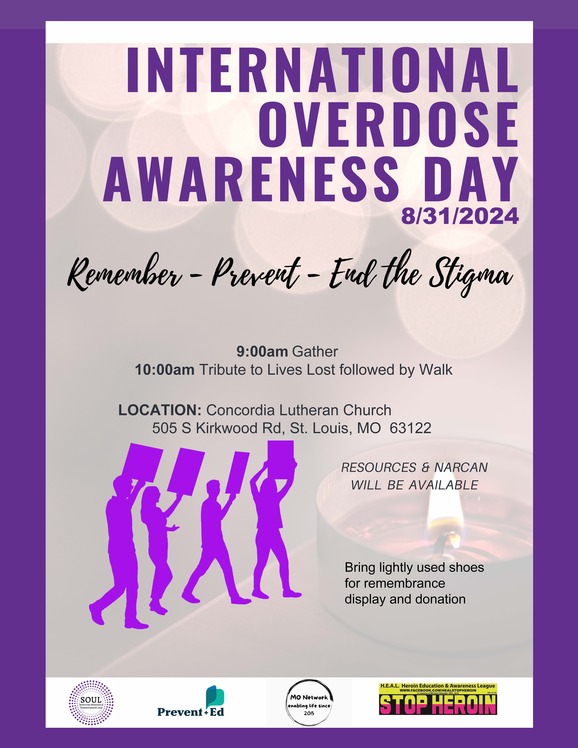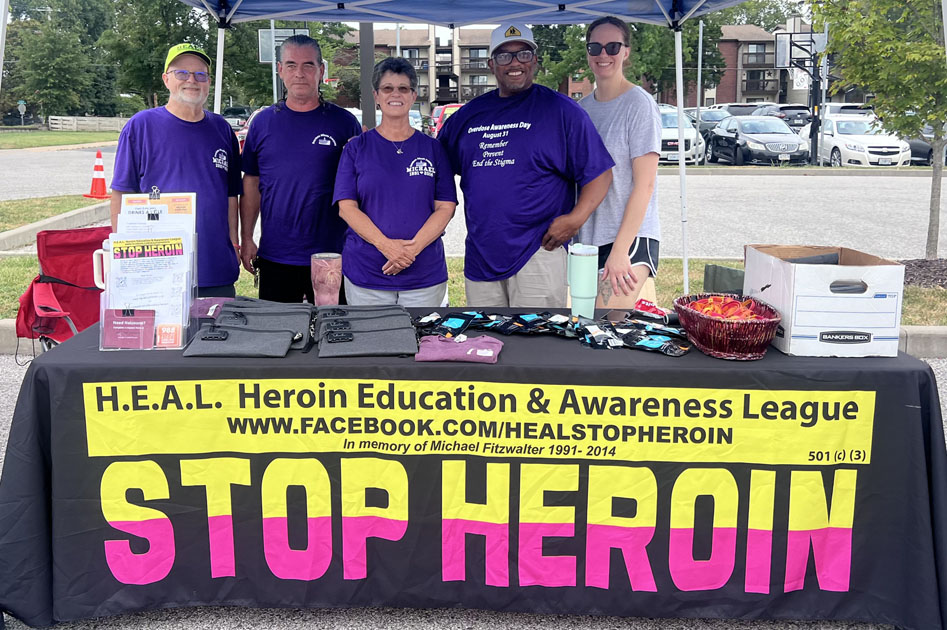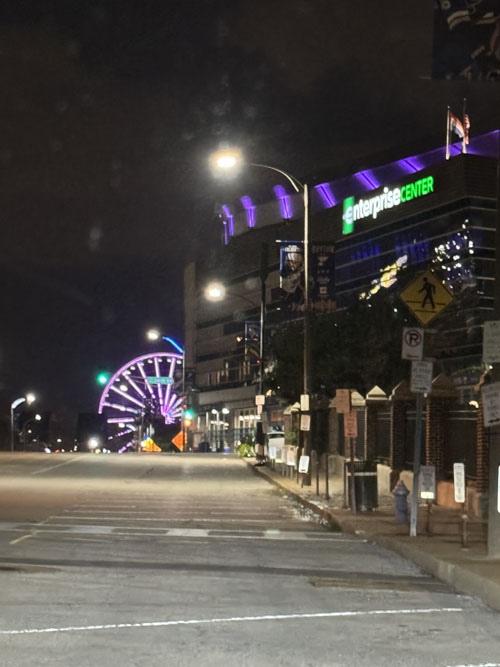|
Back to Prevention Stories
International Overdose Awareness Day
Hosted by:
PreventEd, SOUL, MONet and H.E.A.L: STOP HEROIN

Please briefly describe your Communities Talk activity.
We hosted an in-person event that had the theme of Remember - Prevent - End the Stigma. At this event we not only hosted a tribute and and walk in remembrance of those lives lost to substance use, but we provided resources, with education on prevention and how to support those struggling with substance use disorder. We were able to distribute locking prescription bags, safe medication disposal bags, and Narcan and fentanyl test strips. About 200 people attended the event. The stipend we received aided in advertising for this event. Here is a link highlighting the events of the day: https://healstopheroin.org/international-overdose-aw.

How does alcohol and other drug misuse affect your community?

We lost our son to an accidental heroin overdose in 2014, and after a year and a half of grieving and being ashamed, we decided to do more than just wallow in our grief. We decided it was time to talk about it to end the stigma, so we volunteered with an organization called Walking For Wellness: Stop Heroin. When that organization closed, we formed H.E.A.L.: STOP HEROIN in 2018, focused on St. Louis County and, more specifically, North St. Louis County. We live in North St. Louis County and have seen firsthand how hard this area has been hit, and there was a need for education and awareness. We work closely with such organizations as PreventEd, Drug Enforcement Administration, Missouri Institute for Mental Health, Preferred Family Healthcare, and St. Louis CRUSH.

Which prevention strategy(ies), as defined by SAMHSA’s Center for Substance Abuse Prevention, best fit your Communities Talk activity?
- Community-Based Process Strategy - focuses on enhancing the capacity of the community to address AOD issues through organizing, planning, collaboration, coalition building, and networking.
- Information Dissemination Strategy - focuses on improving awareness and knowledge of the effects of AOD issues on communities and families through “one-way” communication with the audience such as speaking engagements, health fairs, and distribution of print materials.
- Education Strategy - focuses on “two-way” communication between the facilitator and participants and aims to improve life/social skills such as decision making, refusal skills, and critical analysis.

What goal(s) did you hope to accomplish with your Communities Talk activity?
- Develop strategic plans to reduce and prevent alcohol and/or other drug misuse.
- Build coalitions with other agencies or programs to reduce and prevent alcohol and/or other drug misuse.
- Education and awareness

Did you accomplish your goal(s)?
Yes

What challenge(s) did you face in planning your activity this year?
- Inexperience hosting Communities Talk activities

How did you overcome these challenges?
We followed the guidelines laid out, and dove right in there. We host this event every year, but this is the first year with the assistance of Communities Talk.

What are your next steps?

- Host follow-up meetings or activities
- Expand our coalition with new partnerships in the community
- Create a public education campaign to raise awareness and/or change behaviors around underage drinking (i.e., create PSAs and other promotional materials)

Organizations that conduct Communities Talk activities often involve other organizations in the planning and execution of events. Please indicate which type(s) of organizations you involved in your activity planning.
- Faith-based based organizations
- Law enforcement
- Local chapters of national organizations
- Charitable organizations
- Local businesses

Which of the following best describes the primary audience(s) for your Communities Talk activity?
- Youth
- Parents
- Prevention specialists and volunteers
- Black or African American community members

How did you reach and engage your primary audience(s) to encourage them to participate in your activity?
We used Facebook, Nextdoor, X, Instagram, Linkedin, websites, and an email list. We also ran a targeted digital campaign with a lot of help from PreventEd and 2060 Digital. We also distributed printed flyers at other events we attended.

Which Communities Talk resources (or other SAMHSA resources) were most helpful for your activity?

- Prevention-related webinars
- Communities Talk website
- Communities Talk planning guides
- Communities Talk toolkits
- Communities Talk social media content (e.g., Facebook, Twitter)
- Communities Talk Find an Activity Map
|
|